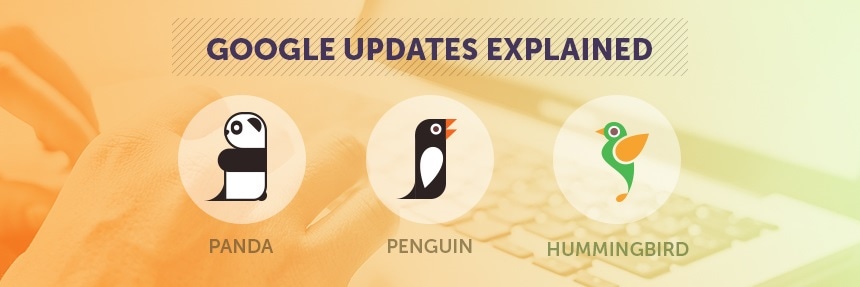
The Birth of the Internet
This week marks the 25th Anniversary of "the Internaut Day", the day when Tim Berners-Lee opened up the internet for public usage.
It might seem digital marketing is a recent invention. The truth is, it has been in development for over 20 years — and some aspects build on much older forms of marketing. Only recently, however, has it overtaken traditional marketing in strategic importance for many firms.
Digital Marketing will account for 75% of budgets
To understand digital marketing, it’s crucial to start with the unique importance it now holds.
Internet Marketing is Taking Over
More Than a Third of CMOs Surveyed Say Digital Marketing Will Be 75% of Their Budget
Today, digital advertising tops $540 billion per year, making it the fastest-growing advertising segment worldwide as of 2014. No business can expect success without digital, particularly in B2B. Plus, this is a long-term trend, not a plateau: Senior marketing leaders expect digital’s growth to continue, driven by the rapid expansion of mobile advertising.
The Rise of Mobile
Mobile alone accounted for $12.85 billion in spending in 2015. Around the same time, mobile eclipsed desktop in total searches served. Combined with greater collaboration between sales, marketing and content teams, the ever-multiplying number of online channels creates a new era for digital marketing. It must be an essential part of the overall business plan.
Mobile Eclipsed Desktop Searches in 2015
How did we get here? What accounts for B2B digital marketing’s indispensable status?
The Advent of Modern Online Marketing
All Roads Lead to Google
The term digital marketing dates back to the early 1990s, at a time when technologists were only just coming to grips with the immense challenges inherent in organizing the World Wide Web.
Without a clear structure, it would be impossible for ordinary users to locate the resources they wanted — which, in turn, would make any cohesive marketing campaign nearly impossible.
Early Search Engines
The concept of the search engine emerged as a possible solution. The ideal “engine” was an automated index of Web content that did not require individual webmasters to submit their sites for consideration. It would grow as the Web did, providing a “map” to an ever-expanding territory. This, in turn, would facilitate display ads and search engine marketing.
Aside from the technical concerns, however, there were early problems:
- There were competing theories on how to rate the value of each individual Web page.
- Search engine companies could grant sites preferential rankings in exchange for fees.
- No monetization models existed for the concepts we now know as digital marketing.
Google’s impact can’t be understated. The original research behind Google, produced by co-founders Sergei Brin and Larry Page during their time at Stanford, posited the idea that each link to a website was an “editorial vote” vouching for the quality of the site’s content.
With Google’s 1998 launch, digital marketing was about to come into focus.
Search Engine Optimization
The “Wild West” to Today
In 1998, Google handled only a few thousand searches a day – but by 2000, it was up to 60 million. It quickly surpassed other early entrants in the field, with the dot-com bubble wiping out key competitors aside from Yahoo and Microsoft.
Businesses realized early that they could achieve low-cost exposure by finding ways to improve their search engine placement. This could be as simple as “stuffing” a page with the same crucial keywords hundreds of times, or creating dozens of sites that would link back to a crucial page.
As a result, early SEO was largely “black hat” — ethics hadn’t even been defined yet.
Google’s turn toward quality content disrupted the “organic traffic” model of digital marketing:

These changes had two lasting effects. First, many smaller firms were driven away from organic traffic as their core digital strategy, with some migrating to Google’s ad platform, AdWords. Simultaneously, companies that were deeply entrenched in the digital scene started to explore content marketing as a method of maintaining search placement while actively prospecting new customers.
Paid vs. Organic
Inbound Marketing (or "Content Marketing") has recently risen in popularity, and with good reason too.
With regards to Paid vs. Organic traffic, there are parallels in renting and buying property; you wouldn't waste money paying rent on a house all of your life. As soon as you stop paying the expense of rent, you run the risk of eviction. Conversely, if you spend time and money making a house a home (or curating great content that earns it's place at the top of the SERPs!) it becomes a long lasting asset that no-one can take away from you... and something truly valuable.
Email Marketing
Email Marketing has gone full circle, from every marketer's favourite channel to every user's most worst annoyance, and with over 193.3 billion emails being sent every day, it's not hard to understand the reasons for the latter.
User Experience is King
We've all fallen victim to our share of the 193.3 billion daily emails - Nothing turns the reader off quite like repeated sales emails from a long lost vendor who you once bought something from a long time ago. Worse still are the emails where your contact details have clearly been sold to a third party and paraded around the internet with little or no regard to your online privacy.
Companies who respect their user's data will ultimately succeed in the long term
However, amidst the ashes of email marketing rises the phoenix of intelligent businesses who adopt an ultra-targeted, data-driven approach where the user is the centre of focus; companies who respect the data of their users will ultimately succeed over the longer term.
Pay-Per-Click
AdWords Dominates as Top Pay-Per-Click Network — and the Network Keeps Growing
Not surprisingly, Google was also first to sweep the field with its PPC offering, AdWords.
SEO involved a great deal of trial and error, with very long horizons before results were achieved. For enterprises seeking faster results, AdWords and other pay-per-click networks provided the opportunity to implement classic direct response marketing techniques in the digital sphere. Rapid, measurable user response meant layout, graphics, copy, and other user experience features could be optimized quickly.
In 2000, AdWords launched with 350 advertisers. Today, it generates tens of billions in revenue via Google’s display network, YouTube, and mobile. Search advertising accounts for half of digital ad spend, yielding $18.7 billion for Google in the third quarter of 2015.
AdWords holds 67% market share versus its nearest competitor, Bing. Bing did not appear until 2009 however, and in the interim, Google had plenty of time to work out a functional business model. The original Google Ad network, Premium Sponsorships, relied on a direct sales team. It wasn’t scalable, and was soon surpassed by today’s self-service model.
Video Marketing

Google’s 2006 acquisition of YouTube, the #2 search engine, represented a tremendous expansion of search engine marketing and a sign to brands: The video era had begun. YouTube sees more than 300 hours of video uploaded every minute.
As B2B decision-makers increasingly shift to mobile, they are consuming more video content in the course of a purchase. This puts YouTube front and center for B2B brands aiming to raise exposure.
With so much content available online, marketers are constantly adapting, searching for more innovative ways to capture their reader's attention and tell stories using visual media such as videos, slide shares and infographics.
Social Networking
New Marketing Opportunities from a Social Revolution
Despite these exciting changes, the digital marketing world would still be a bit gray without one key ingredient: social media. Today’s dominant platform, Facebook, accounts for $17.9 billion in sales, with the average global user generating about $12 in annual revenue for the company.
At the time of its 2004 founding, Facebook was a fairly exclusive college-oriented network. It went live for everyone in 2006 and launched its IPO in 2012. By offering more visual advertising than other platforms, and providing the chance to build an engaged community around a brand, Facebook quickly distinguished itself. The core lessons of “engagement marketing” and “community management” many digital marketers now rely on were learned here.
While there’s been a proliferation of social media platforms, none have seen the same success in digital marketing. Twitter saw $641 million in ad revenue in fourth quarter 2015 — impressive, but no cure for its extended troubles finding its niche. Yahoo, seeking a breakout winner by launching ads on Tumblr, wrote down its value by $230 million soon after its ambitious $1 billion acquisition.
For B2B advertisers, the bright spot in the social story is LinkedIn: Launched in 2002, the network for professionals has 400 million users and generates an estimated 80% of B2B leads online.
Social and the Renaissance of Display
The confluence of social media and mobile has reinvigorated display and banner advertising in new forms. Still, business owners have a good reason to proceed with caution: Digital marketing is also seeing an unprecedented push-back from users.
198 million users worldwide use ad-blocking apps, costing publishers almost $22 billion in 2015.
Looking Ahead
However, no matter what tomorrow's digital marketing looks like, a consistent, robust, customer-focused strategy will be crucial to B2B success. Reach out to AZoNetwork for a specialist consultation in marketing to Scientific, Industrial and Healthcare Markets.